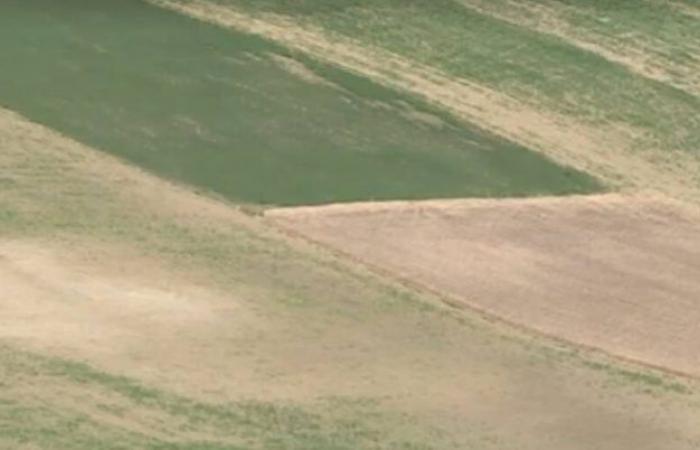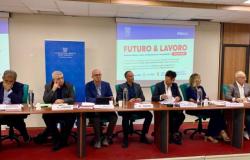Fragile Abruzzo, drought and desertification by 2100
L’Abruzzo, the Green Region of Europe, is at risk of desertification by 2100 due to of potential prolonged droughts, both meteorological and hydrological, with obvious consequences on agriculture and on the production of hydroelectric energy, which is still the first renewable source in the Region. This is what emerges – on the occasion of the World Day to Fight Desertification – From one research from the ‘D’Annunzio’ University which analyzed river flows, rainfall and temperatures since 1985, to determine past variations and have a basis for studying the changes expected in the future, up to 2100.
The research – published in the scientific journal Environmental Challenges – is from the doctoral student Moshin Tariqof the researcher Eleonora Aruffo and the teacher Piero Di Carlo. For the study, a Swat hydrological model was applied to the Abruzzo region which integrates observed river flow data, meteorological data (temperature and precipitation) and others such as evapotranspiration, land use and management, water storage and water basins.
For future climate projections, they have been applied five global climate models taking into account two scenarios, a ‘business scenario’ and a worst-case climate policy scenario, in which emissions and energy production increase without any control. Among the river basins of Abruzzo, the study focused on that ofAterno-Pescarabeing the most important in terms of extension – 152 km long with a catchment area of 3,190 square km – and flow rate. The results of the research on Abruzzo indicate an increase in temperature in all scenarios, accompanied by one decrease in rainfall and flow of the Pescara river.
read also
Politics
28 million for River Contracts, Emanuele Imprudente: Funds to make waterways safer
With regards to precipitation, the average precipitation will go from around 800 mm/year in 1985 to 693 mm/year in 2050 and to 611 mm/year in 2100. The flow rate of the Pescara river will decrease: in 1985 the river carried 95 thousand meters downstream cubes of water per day, in 2050 this value could drop to 74
thousand and in 2100 only 60 thousand. The research also carried out an analysis of drought indices and the results show potential for frequent, severe and prolonged future droughts: meteorological droughts that could last between 105 and 163 months and hydrological droughts exceeding 100 months up to 150 months. The study provides crucial insights for policy makers, underlining the need for strategies that address the impacts of climate change on water resources for sustainability. future.
“The results of the study conducted by the University d’Annunzio of Chieti-Pescara, published in the prestigious journal Environmental Challenge highlight
the importance and urgency of adopting further water management strategies that are resilient and sustainable.” This is supported by the regional councilor for the water system, environment and agriculture, Emanuele Imprudente, interviewed by ANSA to comment on the alarming data from the research by the ‘D’Annunzio’ University of Chieti-Pescara. According to the councillor “it is imperative that policy makers, local and regional institutions and all stakeholders collaborate closely to develop concrete action plans and aimed at mitigating the effects of climate change. Invest in water management infrastructure, improve the efficiency of irrigation systems, promote practices sustainable agriculture and encourage the responsible use of water resources represent fundamental steps for guarantee the resilience of our territory”.
read also
Environment
Climate, Chieti and Pescara among the top 10: L’Aquila first for extreme events
“During the previous mandate – recalls Imprudente – we have financed and partly carried out interventions for improve the integrated water system, allocating approximately 470 million euros. We have allocated 130 million euros for securing the Gran Sasso aquifer, the largest
d’Abruzzo, which serves approximately 800 thousand Abruzzo residents. We found it resources to reduce losses in the water network, to strengthen the irrigation system, to develop the purification system. We have financed the irrigation network with 90 million euros pressure of the Fucino plain: a strategic infrastructure capable of increasing efficiency in the use of resources water, reducing water losses caused by infiltration and evaporation. The plant will increase the yield, the quality of crops and food security while reducing i water and energy consumption of agricultural companies. We have it done through an overall network approach to be able to manage the water resource as an opportunity for development and growth of an entire territory, but we are well aware that it is still there so much to do. And this study – underlines the councilor – makes it clear how a structural intervention can no longer be postponed. The interventions implemented in recent years represent a basis solid basis on which to build increasingly effective environmental policies and far-sighted, capable of fueling virtuous circuits that favor, in coherence with the ongoing transformations, a balanced and proactive relationship between man and the environment. We will work with determination to ensure a sustainable and secure future for future generations.”





